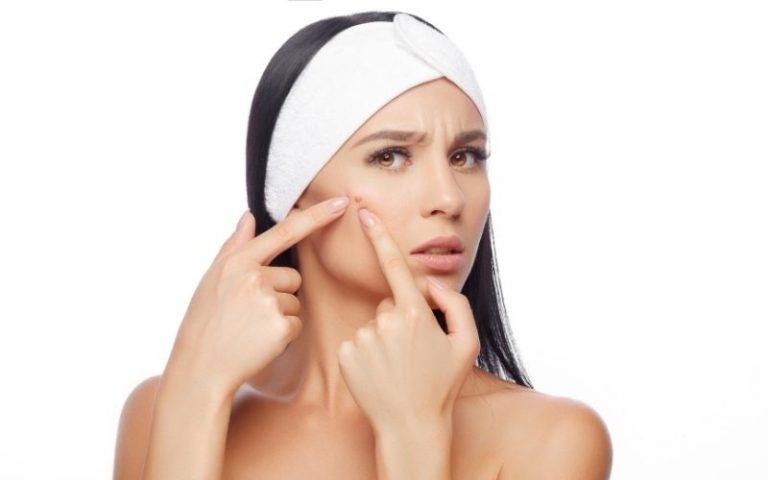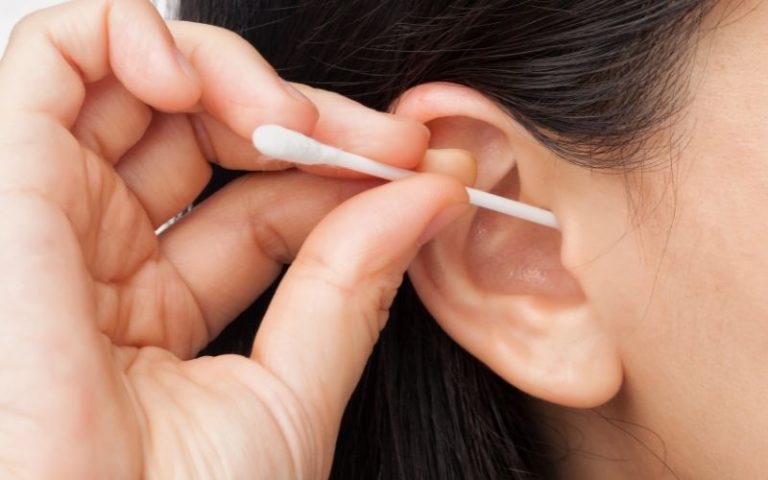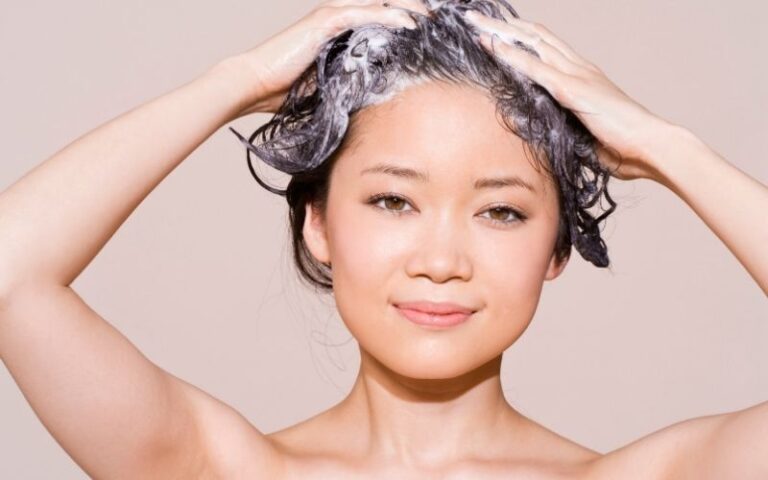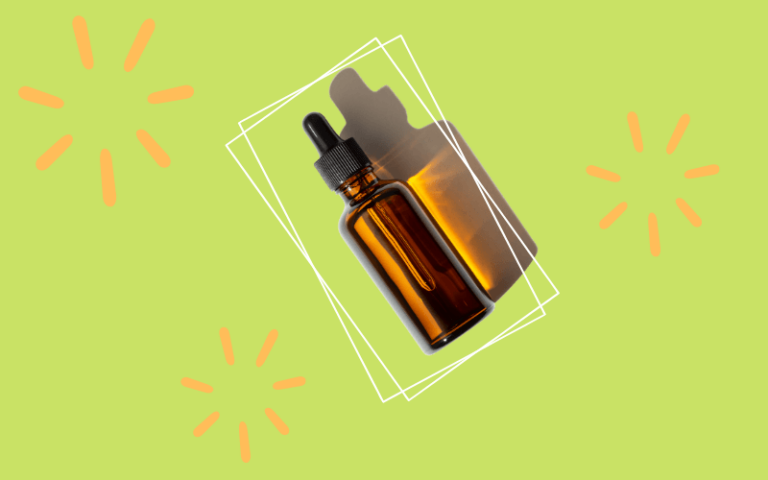Forehead Acne: 10 Treatments To Banish It Forever
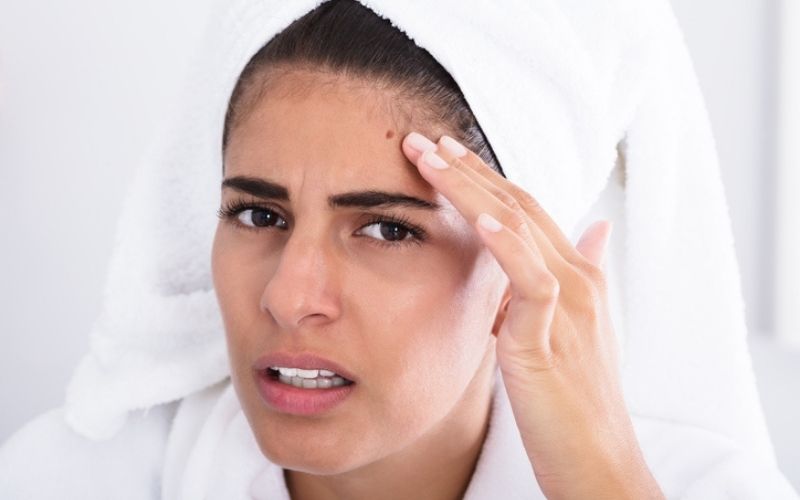
Millions of people worldwide suffer from acne, also known as acne vulgaris or more commonly referred to as zits.
It’s a common skin condition which can affect any nationality and any age group.
But it is not just a skin problem. In many cases, acne breakouts can be both physically and psychologically debilitating.
Following this glow up guide can help you stay strong during these times!
People are not just affected with this issue during their adolescence or teenage years, but it can often extend into adulthood which is referred to as adult acne.
This lifelong problem may wax and wane in severity over the years and include different types of acne.
Forehead acne can be quite frustrating until you get on the correct treatment regimen.
One size does not fit all, so treatments have to be tailored to the specific person.
In addition to the forehead, acne can appear on different parts of the face, including the chin, cheeks, temples, eyebrow area and nose, as well as chest, upper arms and back.
There is no cure that works for everybody, however, there are different treatment plans that can be perfect for your own skin to keep breakouts under control.
Here’s the full guide on forehead acne.
Forehead acne cause
What causes forehead acne?
Regardless of the location of your pimples, the causes are often the same.
Forehead acne is actually a very common location.
Acne forms when dirt, sebum, and bacteria clog your pores, which can occur through different factors:
Oily skin
People with oily skin types often suffer from forehead acne breakouts.
Excess sebum (oil), which is produced in the sebaceous glands (oil glands), build up in the pores which lead to acne formation.
This excess oil production is especially visible in the “T-zone” of the face, which includes the forehead, nose, and chin which gives the surface of the skin a greasy or shiny appearance.
Cheek breakouts can also occur from this.
Hormonal imbalance
Acne breakouts are linked to hormonal changes, which explains why it appears when teenagers hit puberty and teenage girls start their menstruation cycles.
Forehead acne breakouts can also occur with a hormone imbalance, due to medical conditions such as polycystic ovary syndrome (PCOS), or hormone level fluctuations, which can occur during and around menopause.
Excess androgens, or male hormones, are the hallmark of PCOS which lead to increased sebum production and acne symptoms.
Androgens stimulate the oil glands to produce too much oil, which leads to clogged pores.
Menopause is linked to an imbalance in hormone levels as well, caused by a decrease in estrogen levels.
This allows androgens to predominate and thus, cause forehead acne breakouts on different parts of your face.
The chin, jawline, and forehead are the most common areas affected by hormonal acne.
Medications
There are certain medications which can cause severe breakouts or make them worse.
These include oral steroids, certain birth control pills or contraceptive agents, testosterone, anabolic steroids, anti-epileptics (like carbamazepine), antidepressants (like lithium), immunosuppressants (like cyclosporin), and chemotherapy agents (like epidermal growth factor receptor inhibitors).
When you are under stress, your body releases the hormone cortisol.
Cortisol causes your oil glands to overproduce this oily substance, which clogs your pores and causes acne.
Poor hygiene
Poor or bad hygiene is a common cause of acne and easy to remedy.
There are some simple changes you can institute which will help, such as washing your face twice a day to remove dirt, oil and bacteria.
It sounds counterintuitive, but you should also moisturize daily (after you cleanse) even if you have oily skin, otherwise your skin will overproduce oil or grease to make up for the oil that was stripped from your skin in the cleansing process.
Be sure to clean your makeup brushes regularly so you do not push additional dirt and bacteria into your skin.
Overusing exfoliators or drying agents, can cause skin to start over producing oil as well.
Along the same lines, irritants, such as scrub brushes, can worsen your acne.
Finally, you should only use oil free products that do not clog your pores (non-comedogenic) and lead to more zits.
These include soaps, moisturizers, lotions, makeup, and sunscreens.
Hair products and accessories
An oily scalp leads to oily hair — which may lead to an oil forehead.
The oily hair rests on your skin and transfers the oil to your forehead, which leads to breakouts.
Keep your hair off your face.
As with the hair products, make sure you select oil-free hair care products, such as shampoos, conditioners, and leave-in products so that you do not worsen your acne lesions or create more pore blockage.
Alse be sure to check if there are any harmful chemicals in those products.
Even natural hair repair remedies such as coconut oil could drop down to your forehead and create forehead pimples.
Make sure your hair accessories, like headbands, baseball caps, and hats are clean because friction from these accessories can transfer dirt, bacteria and oil to your forehead skin.
Dandruff, or seborrhea, is caused in part by excess oil, which leads to clogged pores.
Also, skin flakes, which are produced by dandruff, can clog your pores as well.
It is important to keep your seborrhea under control with a medicated shampoo to prevent outbreaks.
Bonus tip: Clean your smartphone with a disinfectant wipe every day to make sure there’s no lingering bacteria that could possibly transfer to your face which can cause acne on forehead.
Forehead acne genetics
Acne can run in families, but they have not isolated a particular gene responsible for it.
Genetics plays a role in predicting how our immune system will respond to acne.
If both your parents have acne, this probably increases your chance of having acne-prone skin, too.
Certain conditions run in families as well, like PCOS which can lead to sensitive skin and breakouts by causing hormone changes.
Diet
Diets that are high in carbs and have a lot of refined sugar (high glycemic load) can make acne worse.
Therefore, it is important to avoid foods such as cakes, cookies and chocolates.
Oftentimes, pimples can be a side effect of eating dairy too.
Symptoms of forehead acne/pimples
There are several different kinds of forehead acne based on their etiology.
The small hairs on our face (vellus hairs) protrude from small openings in the surface of your skin called pores or hair follicles. Each follicle has an oil gland attached to it.
These glands produce oil which gets excreted from your pores.
Comedonal acne (Comedos): Caused when your pores get clogged with dirt and oil.
This type of acne appears as blackheads and whiteheads (pustules) and are called comedones.
Whiteheads are when the irritated pore closes and has a white center, while blackheads have open pores that appear dark in color due to oxidation from being exposed to air.
Comedonal acne tends to remain as small white bumps (pustules) or small black bumps (blackheads) on the skin’s surface.
These are the most typical blemishes.
Inflammatory acne: If bacteria gets trapped, these small bumps get larger and inflamed, and extend deeper to become a form of acne called inflammatory acne.
This stubborn acne takes the form of smaller pink bumps (papules), larger pink-red bumps (nodules) or cysts.
These cystic acne lesions are oftentimes tender, cause swelling, take longer to heal, and can scar.
We have a full guide to healing blind pimples in no time.
How to get rid of forehead acne
1) Diet
A diet rich in fruits and vegetables that contain the antioxidant vitamins A and C can help with acne overall.
Vitamin A helps shed skin cells, while vitamin C works as an anti-inflammatory.
Also, minerals, like zinc and probiotics have helped acne. Zinc regulates oil production, and probiotics decrease bad bacteria that can cause zits.
Refined sugars that are present in desserts, sodas and candy are known to worsen acne conditions.
Also, foods that have a high glycemic load (too much sugar), such as pasta, rice, and white bread, can worsen forehead acne.
Dairy products have been linked to breakouts in some people as well.
I know you’ve heard this from everyone and their mom, but it’s very important to stay well hydrated throughout the day, because dehydration will cause your glands to produce too much sebum leading to worsening of your breakouts.
2) Cleanser
This is the first step to a good treatment plan.
You MUST wash your face twice a day. Period.
Once in the morning to get rid of bacteria, debris, and excess oil that was produced overnight, as well as once at night to remove makeup, dirt, oil and bacteria that appeared throughout the day.
Cleansers from Cerave or Cetaphil will do the trick!
Never go to bed without washing off your makeup because it is a breeding ground for bacteria (yikes!).
You should wash immediately after workouts/activities or playing sports such as football, basketball, etc.
Whether you shoud wash your face or whole body each time will depend.
For example, if you get breakouts different parts of your body like your chest, back and arms, you should cleanse your body twice a day with body wash as well.
As with all your skincare products, your cleanser and body wash should be oil free and non-comedogenic so it will not clog your pores and promote forehead acne.
The type of cleanser depends on your skin type but it should be oil free and non-comedogenic.
If you have sensitive or dry skin you might prefer using a non-foaming gentle cleanser or mild soap, so that you don’t irritate your underlying skin condition.
If you have normal or oily skin, a medicated acne cleanser will help.
These medicated cleansers usually contain the active ingredients: salicylic acid or benzoyl peroxide.
Salicylic acid helps forehead acne by removing dead skin cells, reducing oil, and unclogging pores.
Benzoyl peroxide helps acne by not just removing dead skin cells, reducing oil and unclogging pores, but also by killing bacteria. Booyah.
Now this, is good skin care.
3) Add exfoliating to your routine
Exfoliating once to twice per week can be beneficial for preventing forehead acne and to smooth out your skin’s surface.
It helps to remove dead skin cells from your skin’s surface which clog your pores and lead to acne.
There are two types of exfoliating products: those with chemical exfoliants and those with physical exfoliants.
Chemical exfoliants use acids, such as glycolic acid, that you gently apply to your face to loosen the connection between the skin cells so they can be removed.
Physical exfoliators or scrubs consist of beads that you use to scrub your face.
If you scrub too hard with physical ones or use any exfoliator too often, you can worsen forehead acne by irritating your skin’s surface.
This irritation causes zits to get inflamed and your skin to produce excess oil, both of which worsen acne.
4) Check your hair products
The choice of hair care products is just as important as facial products.
Oil-free, non-comedogenic products are essential to prevent forehead breakouts.
Certain products that contain oils, gels, pomades, and waxes are often found to be the culprit in forehead acne.
These products can clog pores along the hairline causing pomade acne (acne caused by hair products).
Opt for more natural hair products and see if that makes a difference in your forehead acne.
5) Dandruff shampoo might be the cure
A condition that is often confused with traditional acne is fungal acne.
This is caused by a yeast called Malassezia that thrives in hot climates.
This yeast gets trapped in hair follicles and causes inflammatory bumps to appear that resemble traditional acne.
This is the same yeast that can cause dandruff, or seborrheic dermatitis.
Seborrheic dermatitis commonly affects the eyebrow, scalp, sides of nose and beard areas, similar to acne.
A great treatment option for fungal acne is to use a dandruff shampoo that contains the following ingredients: ketoconazole, sulfur, zinc pyrithione or selenium sulfide.
These shampoos can be used as a face wash to treat fungal acne. It is important to leave them on for 2-3 minutes after cleansing so that the medication can penetrate your skin and kill the yeast.
6) Don’t touch it
It is extremely important not to pick at blemishes or touch your face with your hands.
These actions can deposit dirt and bacteria into your hair follicles leading to the worsening of your forehead acne.
I know, I know. It’s tempting to squeeze or pick at the pimples to get the pus out in hopes to heal it faster. In actuality, this leads to further inflammation of the lesion causing it to take longer to heal or to scar permanently.
In severe cases, this might even cause an infection requiring antibiotics to heal.
7) Change your pillowcases often
As with anything that touches your face, your pillows should have clean pillowcases, which ideally should be laundered after every use, or at least a few times a week for best results.
If dirt and bacteria accumulate on them and you sleep on your side or stomach, this will rub dirt and bacteria into your hair follicles leading to acne on your forehead and other areas of your face.
This type of acne that is caused by friction is called acne mechanica (mechanical acne).
8) Avoid tight fitting head gear
Athletic headgear, headbands, bandanas, baseball caps, and hats that come in contact with your forehead skin need to be cleaned after every use and fit properly to avoid friction.
If they contain dirt, sweat, oil, and bacteria, this will get pushed into the hair follicles and create an environment to cause forehead acne.
The best techniques to clean headbands, caps, and hats are to wash the material in hot water and, if possible, dry on high heat to kill the bacteria.
Athletic equipment can be washed after every use with antibacterial cleaning products.
9) Facial masks
Facial masks can help forehead acne if they contain ingredients, such as salicylic acid, benzoyl peroxide or sulfur.
These products help to remove dead skin cells and unclog pores to help stop breakouts.
Masks that contain sulfur are great for calming facial redness and inflammation.
Chemical peels can help acne as well by removing the top layer of the skin to produce newer healthier skin.
Some peels also contain acne fighting ingredients, like retinol/retinoic acid and salicylic acid. Salicylic acid peels are super effective against forehead pimples!
10) Spot treatments
Over-the-counter treatments (OTC) are easily the best treatment to add to your acne skin care routine.
They are great if you get an occasional forehead pimple or you have a very large inflammatory acne bump that you want to disappear quickly.
These acne treatments can be in the form of a cream (with benzoyl peroxide or tea tree oil) or in the form of a pimple patch.
Spot treatments are usually applied at night to help dry the pimple out and reduce moisture while you are sleeping.
If you experience too much dryness, dilute the products.
However, some wear the patches during the day to help protect the pimple while it heals.
Patches are also a good deterrent for picking.
There are also home remedies/natural remedies that you can use as spot treatments such as raw honey or green tea.
When to see a dermatologist for forehead acne
Different types of acne are treated in distinct ways.
Most mild cases respond well to over the counter medications, however, depending on the severity of your acne, if it consists of nodules and cysts that will scar/cause discomfort, you’ll likely need the medical help of your healthcare provider.
If you cannot keep your forehead acne under control with over the counter products, it is time to see a dermatologist for prescription medication treatments.
The good news is there are wonderful prescription products that can help your forehead acne.
If you need help finding a board certified dermatologist for medical treatment, you can check out the American Academy of Dermatology’s website.
Dermatologists can choose from a variety of prescription medications, such as topical medications, topical antibiotics, oral antibiotics, topical retinoids, anti-androgen pills, and in severe cases, oral isotretinoin.
Topical treatment medications: Consist of prescription strength benzoyl peroxide creams and washes to help get rid of dead skin cells, unclog pores and kill bacteria.
Topical treatments: Such as clindamycin, are good for killing acne causing bacteria.
Oral antibiotics: Such as minocycline, are great for acne because they not only kill bacteria but also decrease inflammation.
Topical retinoids/retinol: Retinoids such as tretinoin, adapalene and tararotene, are useful for getting rid of dead skin cells, controlling oil production, and even helping with acne scars and dark spots.
If excess androgens are the cause of your breakouts, hormonal contraceptives/oral contraception, like spironolactone, or birth control pills can be of help.
These would be Food and Drug Administration Approved (FDA) and backed by studies.
Certain cases of forehead acne also respond to laser treatments as well.
Finally, in the most severe cases of nodular or cystic acne, your best bet might be oral isotretinoin that can help by getting rid of dead skin cells, decreasing oil production, killing bacteria and relieving inflammation.
Whatever prescription acne medication you start, just remember that it takes a couple of months to start to see any results.
Forehead acne highlights
Forehead acne can be a very frustrating and lifelong debilitating condition for many people but it is one of the most common locations of acne.
There are certain habits that you can change to help your condition, such as proper hygiene and diet.
Also, many over the counter acne treatments can keep mild acne under control and aid moderate acne.
If these remedies don’t work or you have severe forehead acne, you should seek doctor’s care from a dermatologist to prevent ongoing inflammation and permanent scars.
You can overcome this skin condition.
There are many great and effective treatments to improve your forehead acne to get the clear skin you deserve!
